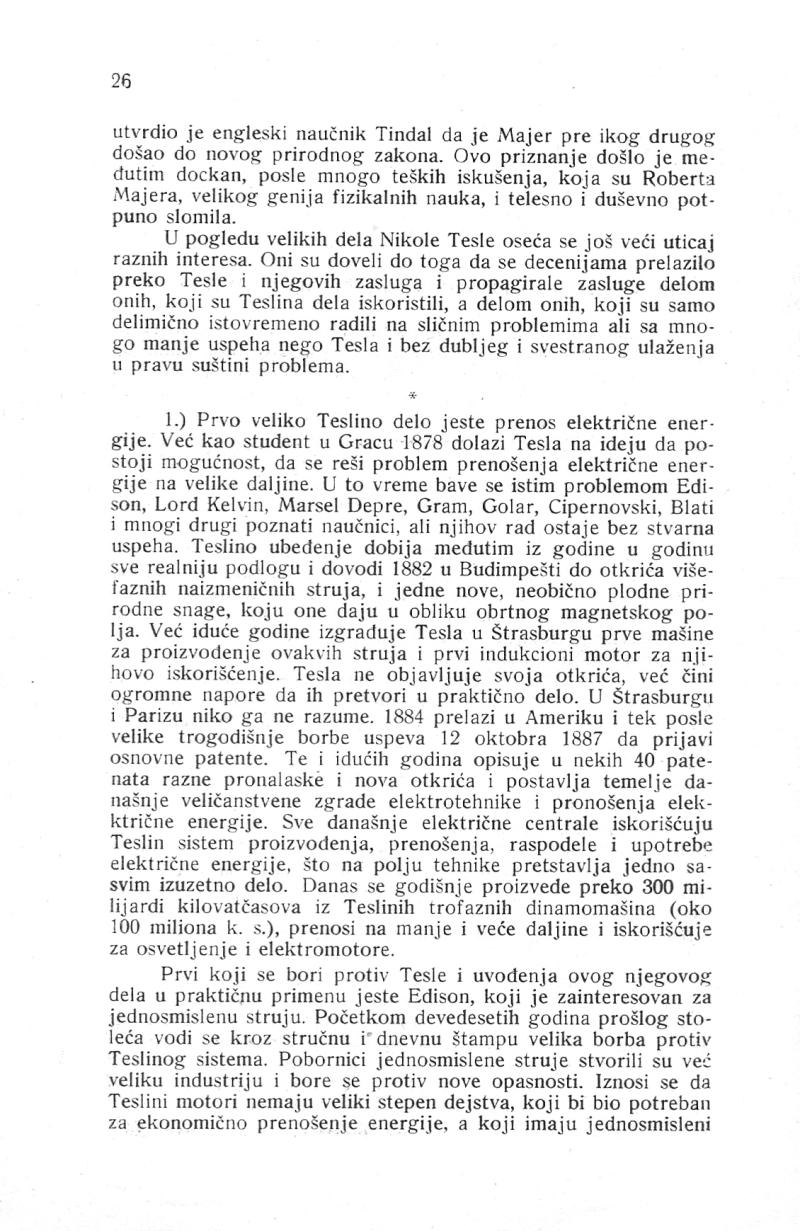
Nikola Tesla Books
did the English scientist Tindal establish that Mayer was the first to discover a new natural law. However, this recognition came very late, after many severe trials that completely broke Robert Mayer, a great genius of physical sciences, both physically and mentally.
Regarding the great works of Nikola Tesla, the influence of various interests is even more pronounced. Decades passed where Tesla and his merits were overlooked, and the merits of those who used Teslaâs works were propagated, as well as of those who only partially worked on similar problems but with much less success than Tesla and without a deeper and comprehensive understanding of the true essence of the problems.
*
1.) Teslaâs first major work is the transmission of electrical energy. Already as a student in Graz in 1878, Tesla came up with the idea that there might be a solution to the problem of transmitting electrical energy over long distances. At that time, Edison, Lord Kelvin, Marcel Deprez, Gram, Golar, Cipernovsky, Blati, and many other well-known scientists were working on the same problem, but their work remained without real success. However, Teslaâs conviction became increasingly realistic year by year, leading to the discovery of multiphase alternating currents in 1882 in Budapest and a new, unusually fruitful natural force they produce in the form of a rotating magnetic field. The following year, Tesla built the first machines in Strasbourg to produce such currents and the first induction motor for their use. Tesla did not publish his discoveries but made tremendous efforts to turn them into practical reality. In Strasbourg and Paris, no one understood him. In 1884, he moved to America, and only after a great three-year struggle, he succeeded in filing fundamental patents on October 12, 1887. In the subsequent years, he described various inventions and new discoveries in about 40 patents, laying the foundation for todayâs magnificent structure of electrical engineering and the transmission of electrical energy. All modern power plants utilize Teslaâs system of generating, transmitting, distributing, and using electrical energy, representing an entirely exceptional achievement in the field of technology. Today, over 300 billion kilowatt-hours are produced annually from Teslaâs three-phase dynamo machines (about 100 million horsepower), transmitted over shorter and longer distances, and used for lighting and electric motors.
Edison, who is interested in direct current, is the first to oppose Tesla and the implementation of his work in practical applications. In the early nineties of the last century, a great battle was waged through professional and daily newspapers against Teslaâs system. Advocates of direct current already created a large industry and fought against this new threat. It was argued that Teslaâs motors did not have the high efficiency required for economical energy transmission, as the direct current motors did;
